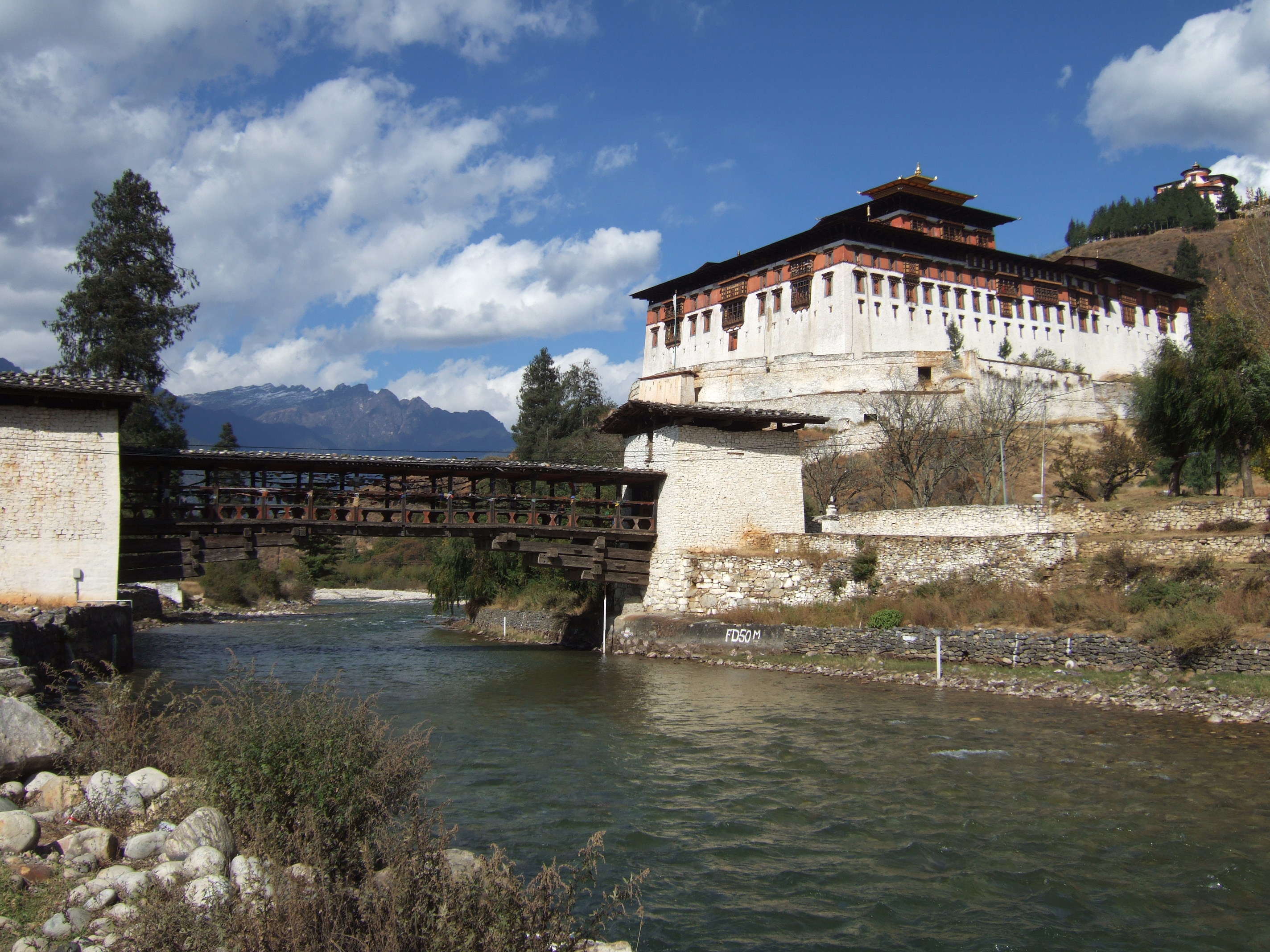Paro Chhu on:
[Wikipedia]
[Google]
[Amazon]
The Paro Chhu is a river of western

Bhutan
Bhutan, officially the Kingdom of Bhutan, is a landlocked country in South Asia, in the Eastern Himalayas between China to the north and northwest and India to the south and southeast. With a population of over 727,145 and a territory of , ...
. It is a tributary of the Wong Chhu, which is known as the Raidak in its lower reaches.
Course
The Paro Chhu rises to the south of Chomo Lhari (mountain of the Goddess). Its glacial waters plunge torrentially through alpine meadows and deep gorges in theJigme Dorji National Park
Jigme Dorji National Park (JDNP), named after the late Jigme Dorji Wangchuck, is the second-largest National Park of Bhutan.
History
It was established in 1974 and stretches over an area of 4316 km2, thereby spanning all three climate z ...
, and descend into a wide, open, undulating valley. Sub-alpine and temperate forests are found along its middle and lower reaches. A prime trout
Trout (: trout) is a generic common name for numerous species of carnivorous freshwater ray-finned fishes belonging to the genera '' Oncorhynchus'', ''Salmo'' and ''Salvelinus'', all of which are members of the subfamily Salmoninae in the ...
stream, it nourishes lush green rice fields and apple and peach orchards on its banks.
Paro
The Paro Chhu flows through the Paro Valley, which is the site of one of Bhutan's main towns, Paro, and many important monasteries. The two best known monasteries here are Taktshang ("Tiger's nest" inDzongkha
Dzongkha (; ) is a Tibeto-Burman languages, Tibeto-Burman language that is the official and national language of Bhutan. It is written using the Tibetan script.
The word means "the language of the fortress", from ' "fortress" and ' "language ...
), and Paro Dzong. Taktshang clings to a ledge of a high cliff approximately 15 km north of Paro. Taktshang and Paro Dzong are two of the finest examples of Bhutanese architecture. Below the Dzong, a traditional wooden covered bridge called Nyamai Zam spans the Paro Chhu. The original bridge was washed away in a flood in 1969 and the present one is a reconstruction. Earlier versions of this bridge were removed to protect the Dzong. The bridge was also shown in the movie Little Buddha
''Little Buddha'' is a 1993 drama film directed by Bernardo Bertolucci, written by Rudy Wurlitzer and Mark Peploe, and produced by usual Bertolucci collaborator Jeremy Thomas. An international co-production of Italy, France and the United Kingd ...
by Bernardo Bertolucci
Bernardo Bertolucci ( ; ; 16 March 1941 – 26 November 2018) was an Italian film director and screenwriter with a career that spanned 50 years. Considered one of the greatest directors in the history of cinema, Bertolucci's work achieved inte ...
Below the town of Paro, the river runs immediately to the west of Bhutan's only international airport. That airport is renowned for its hair-raising final approach.
Kayaking
The lower Paro Chhu is a good stretch of about for beginner/intermediate kayakers. This stretch has many small, boulder rapids and wave trains. There is one class IV–V boulder choke, about 3 km from the put in, which can be run on the left and scouted from the right. It is suitable forkayak
]
A kayak is a small, narrow human-powered watercraft typically propelled by means of a long, double-bladed paddle. The word ''kayak'' originates from the Inuktitut word '' qajaq'' (). In British English, the kayak is also considered to be ...
s only as the river is too small for a raft
A raft is any flat structure for support or transportation over water. It is usually of basic design, characterized by the absence of a hull. Rafts are usually kept afloat by using any combination of buoyant materials such as wood, sealed barre ...
to be enjoyable. After this, the river enters a short, scenic canyon
A canyon (; archaic British English spelling: ''cañon''), gorge or chasm, is a deep cleft between escarpments or cliffs resulting from weathering and the erosive activity of a river over geologic time scales. Rivers have a natural tendency t ...
with more class II–III rapids. The stretch ends at Chhuzom. More experienced kayakers can continue down the Wong Chhu.
Chhuzom
Chhuzom (''Chhu'' means river and ''zom'' means join) is the place where Paro Chhu and Wong Chhu meet. For many traditional Bhutanese this confluence is considered the union of a father and mother river. Paro Chhu represents the father and is sometimes called the Pho Chhu, Wong Chu represents the mother. Because Bhutanese traditions regards such a convergence of rivers as inauspicious, there are threechorten
In Buddhism, a stupa (, ) is a domed hemispherical structure containing several types of sacred relics, including images, statues, metals, and ''śarīra''—the remains of Bhikkhu, Buddhist monks or Bhikkhuni, nuns. It is used as a place of ...
s here to ward off evil spells in the area. Each chorten is in a different style—Bhutanese, Tibetan and Nepali.Pommaret (2006), p.129 The upper reaches of Wong Chhu, above Chhuzom, are sometimes referred to as Thimphu Chhu.Brown ''et al.'', p. 85
Notes
Bibliography
* * {{coord, 27, 19, N, 89, 32, E, display=title, region:BT_type:river_source:GNS-enwiki Rivers of Bhutan